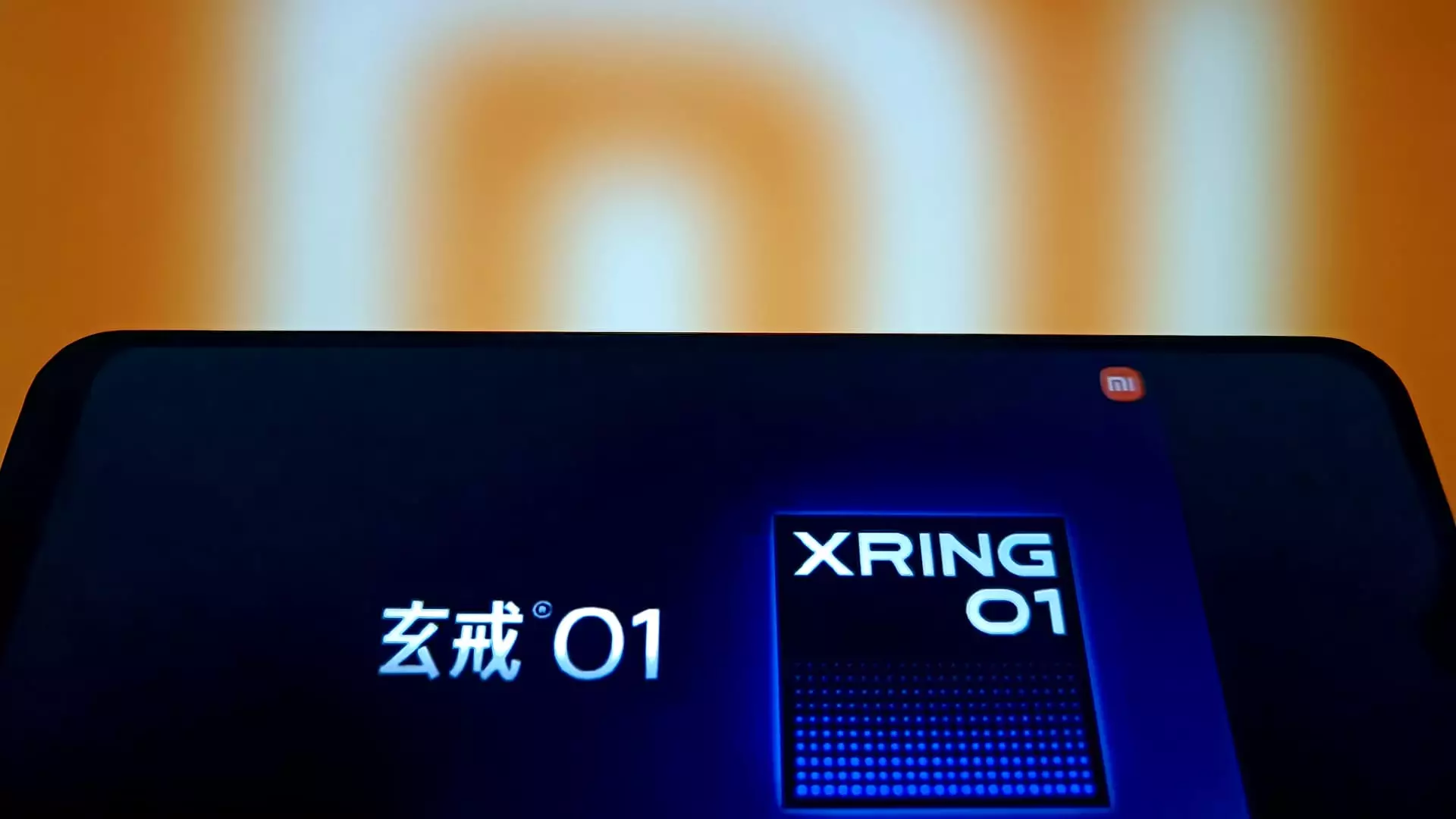Xiaomi, the Chinese smartphone titan, is positioning itself as a formidable competitor in the elite smartphone arena dominated by Apple. With the recent launch of the Xiaomi 15S Pro, priced at an attractive 5,499 yuan (approximately $764), the company presents a tantalizing alternative to Apple’s offerings. In comparison, the iPhone 16 Pro starts at 7,999 yuan, and the Pro Max variant at a staggering 9,999 yuan, clearly illustrating Xiaomi’s strategy of targeting price-sensitive consumers, especially with state-subsidized discounts making its model even more appealing. This financial maneuvering isn’t just a stroke of luck; it’s a calculated assault aimed at capturing a greater market share by undercutting the tech giant, challenging the notion that premium pricing equals superior quality.
A New Era of Semiconductors
At the heart of this battle lies Xiaomi’s ambitious unveiling of its new chip, the Xring O1. The bold claim made by Xiaomi’s CEO, Lei Jun, that this chip surpasses Apple’s A18 Pro on several technical metrics cannot be overlooked. While such assertions demand scrutiny—given that independent verification from outlets like CNBC is still pending—there’s no denying the significance of Xiaomi’s commitment to semiconductor innovation. The company plans to invest around 50 billion yuan ($6.9 billion) into chip development over the next decade, which signals its serious intent to develop an ecosystem that can rival that of Apple. Meanwhile, Apple, with its hold on advanced technology, has restricted access for Chinese companies to high-end semiconductor equipment, further complicating the competitive landscape. Xiaomi’s resilience in this environment is commendable, showcasing a spirit of ingenuity amid adversity.
Game On: Features and Innovations
While Apple often dazzles its audience with cutting-edge features, Xiaomi is subtly but effectively marketing the practical applications of its devices. The Xiaomi 15S Pro boasts capabilities such as locking and unlocking compatible vehicles—features that many consumers appreciate in the real world, even if they lack the slick glamor associated with Apple’s presentations. Xiaomi is also making a remarkable leap into the electric vehicle market. With its first electric sedan, the SU7, priced significantly lower than Tesla’s Model 3, the company not only enters the automotive arena but also threatens to disrupt it. By doing so, Xiaomi is demonstrating its versatility and ambition, extending its product portfolio far beyond smartphones.
The Flipside: Challenges and Realities
However, despite these promising developments, the hurdles facing Xiaomi are substantial. Recent reports indicate a dip in vehicle deliveries, with a tragic incident involving an accidental crash raising concerns about the safety of its autonomous driving features. Such setbacks may lead to increased scrutiny from consumers and regulators alike, requiring Xiaomi to tread carefully as it expands into new industries. The move towards electric vehicles not only increases the pressure on their supply chain and safety protocols, but it risks overshadowing their smartphone endeavors, potentially creating a fragmented brand identity.
Global Ambitions and Financial Fortunes
Xiaomi’s growth trajectory appears promising, particularly as 42% of its revenue last year came from international markets. The company’s shares are riding high, more than 50% up year-to-date, indicating strong investor confidence and market enthusiasm. However, the true test lies in whether this momentum can be sustained or whether it will crumble under authenticity and accountability pressures. Investors must remain vigilant and weigh the potential risks against the exciting prospects presented by Xiaomi.
Final Thoughts: A Disruptor or a Fad?
Xiaomi’s ascent in the tech realm exemplifies a classic narrative of underdog triumphing through innovation and strategy. While they have shown potential to provide an effective alternative to established giants like Apple, they cannot afford to become complacent. The question remains: Will their innovations solidify them as a staple of tomorrow’s tech landscape, or will they fade into obscurity like many ambitious challengers before them? In the challenging environment defined by geopolitical tensions and the push for technological supremacy, Xiaomi’s ability to navigate these waters effectively will be paramount. Their strategies exemplify the potential of centrist liberalism in fostering innovation, but whether they can capitalize on this potential remains to be seen.

